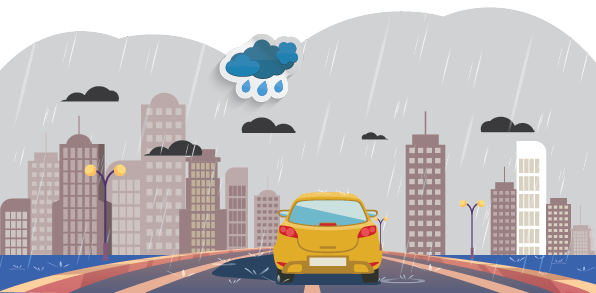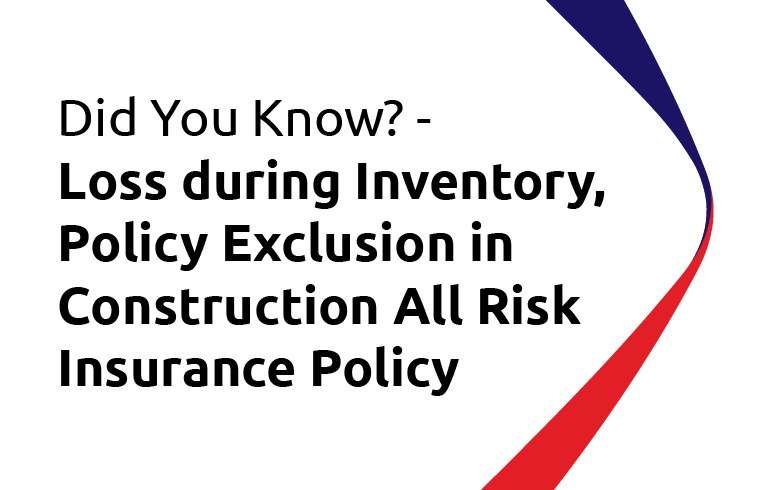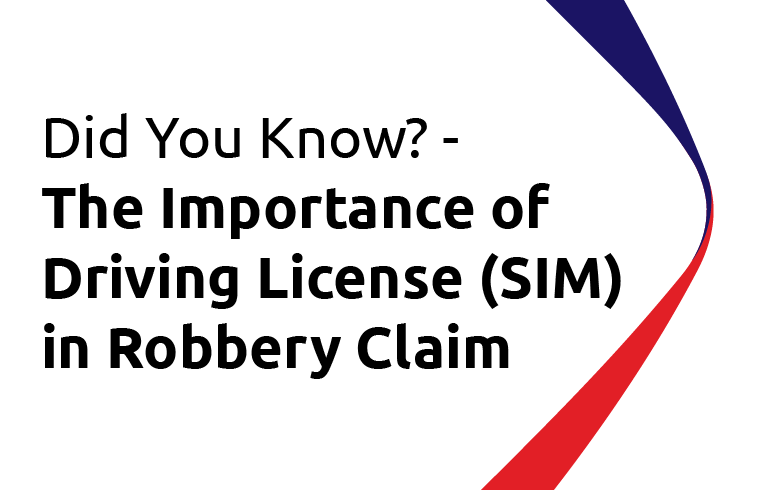Did You Know? Driving in The Rain

Whether a sprinkle or a heavy downpour, driving in the rain can be one of the most challenging driving situations a driver encounters. Here are some safety tips for driving in the rain for you to follow:
1. Wait Until the Weather Improves if Possible
We know it’s not always possible. But when it is, try not to be behind the wheel when the rain starts. There is no reason to put yourself in danger if driving in wet conditions unnecessary.
2. Check That Your Car is Working Properly
Ensure that your car’s equipment is in working order before encountering rainy weather. Check your headlights, taillights, and windshield wipers to ensure that they work efficiently when needed. Also, check the tread of your vehicle’s tires. Balding tires can severely reduce traction on wet roadways.
3. Drive Slower Than Usual
Wet roads are hazardous. Your vehicle’s reaction time is much slower when it is raining. Reduced speed is imperative when it’s raining.
4. Turn Your Headlights On and Don’t Use Emergency Flashers (Hazard Lights)
Even if it is only misting, turning on your vehicle’s headlights will increase both your visibility and other drivers’ ability to see your car on the road. But, don’t use the emergency flashers (hazard lights), because as its name, it is for use in emergencies only. It should primarily be used when you have stopped because of an emergency and where it may be hard for other drivers to see you. Always use them if you have stopped closed to travel lanes.
Driving with hazard lights on is illegal in several countries - regardless of your reason for using them. But more importantly, why driving with hazard lights is prohibited because other drivers may not expect to see hazard lights on a moving car may think your vehicle is idle. The hazard lights also negate their function when using the turn signal as usual.
5. Maintain a Safe Distance Between Cars
Keep a greater distance between your vehicle and the car in front of you. Stopping your vehicle will be more difficult when driving in the rain. Maintain a distance of several car lengths between your vehicle and other vehicles.
6. Keep Your Visibility Clear by Upgrade The Wiper Blades
If it doesn’t clean your windshield in a single swipe, or if it leaves streaks, then it should be replaced. It is recommended to return every year.
7. Avoid Heavy or Sudden Braking and Don’t Use Cruise Control
Try to slow your vehicle by taking your foot off the accelerator earlier than you usually would in preparation to slow down or stop. Don’t use cruise control, so your attention on using both the gas and brake are in tune. Cruise control is a technology that allows car drivers not to press the gas pedal all the time, especially when driving on the highway.
8. Stay Away From Large Puddles
Driving through standing water can cause hydroplaning, which is when you lose traction and skid across the surface of the road. To avoid hydroplaning, drive at a not too high speed so, you have a chance to avoid large puddles.
9. Stay Calm When Hydroplaning and Don’t Accelerate
Hydroplaning is one of the most common car accidents in the rain because drivers can lose control. If your car hydroplanes, calmly take your foot off the accelerator and steer your car straight ahead. Avoid making sudden turns or slamming on your brakes.
10. Open The Car's Ventilation Slightly
Rain causes humidity levels to increase. You may find that your vehicle’s windows become foggy when you drive while it is raining. Slightly opening the ventilation window vehicle may help prevent windows from fogging up.
Drive safely in the rain by consistently applying these tips. Keep in mind that reducing your speed and turning on your lights are the two most straightforward and most effective ways of reducing the chances of an accident caused by rainy weather.
If you need further explanation regarding the terms and conditions of the policy, please get in touch with us at 021 - 2523110 and we will be pleased to assist you.



